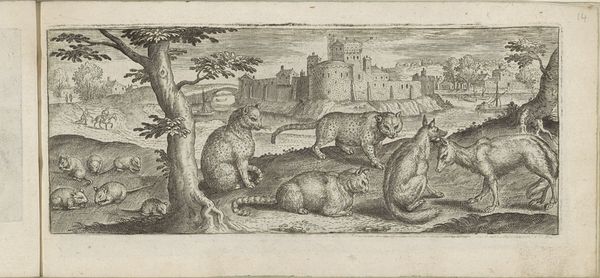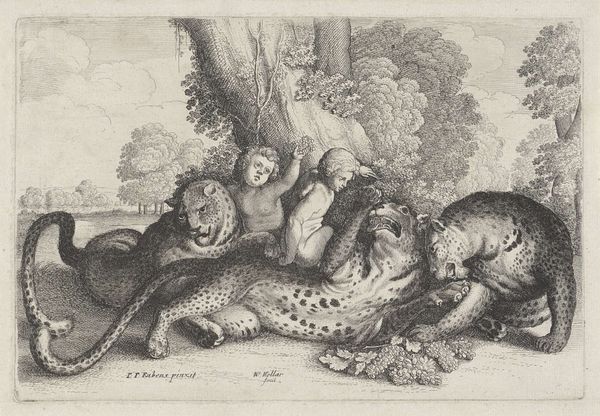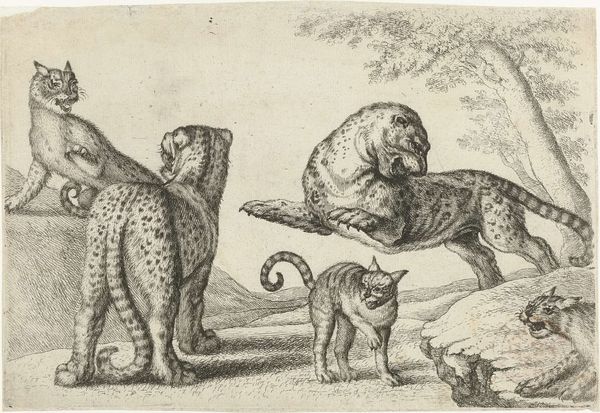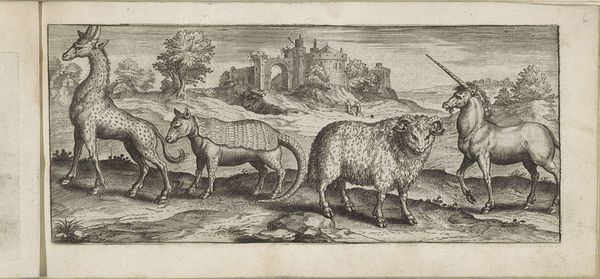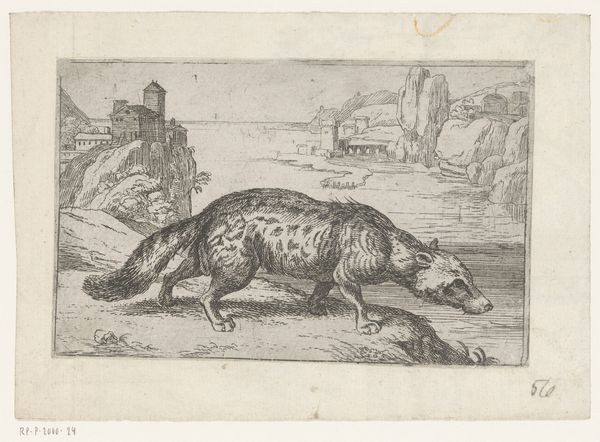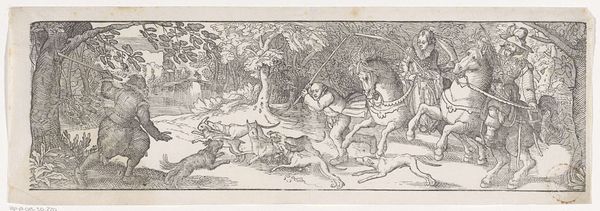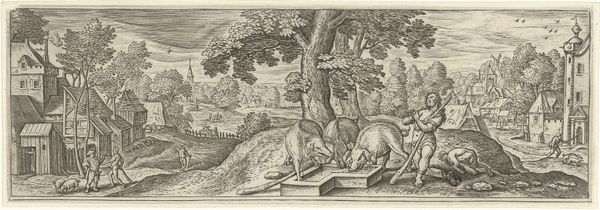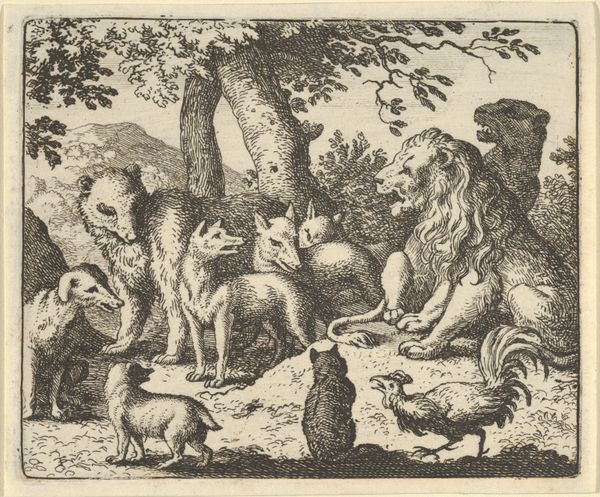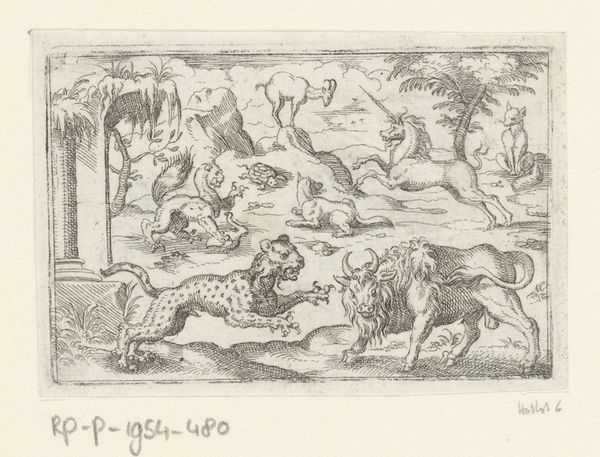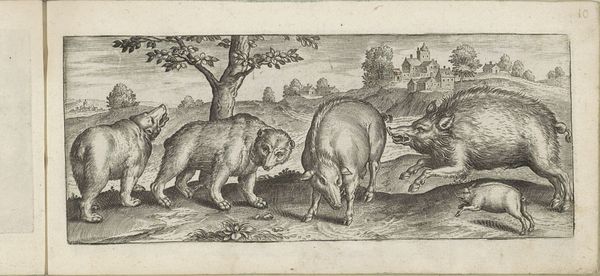
drawing, print, etching, engraving
#
drawing
#
animal
# print
#
etching
#
landscape
#
figuration
#
11_renaissance
#
genre-painting
#
northern-renaissance
#
engraving
Dimensions: width 209 mm, height 85 mm
Copyright: Rijks Museum: Open Domain
Editor: This print, “Ratten, katten en vossen” from 1583 by Abraham de Bruyn, features an assortment of animals etched with a remarkable precision. The assembly feels allegorical, almost like a fable. How would you interpret this piece? Curator: It's fascinating how de Bruyn positions these creatures. In 16th-century prints, the depiction of animals, especially in seemingly natural landscapes, was often imbued with moralistic or satirical meaning. How does the gathering of predator and prey in what should be a conflict setting, strike you in light of power dynamics within the social landscape of the time? Editor: That makes sense. The cats and foxes, despite their predatory nature, coexist alongside the rats without any visible conflict. Is de Bruyn critiquing the social order through the animal kingdom? Curator: Precisely! Consider the Northern Renaissance context – a time of political upheaval and religious reformation. Prints became powerful tools for disseminating social commentary. De Bruyn might be commenting on the uneasy alliances and power struggles amongst different social classes or even political entities, masking these criticisms in an accessible visual language through easily recognizable animal tropes. Are there compositional elements that lead you to that conclusion? Editor: Well, there's the detailed backdrop of the town…perhaps hinting at societal structures overlooking these animalistic interactions. And maybe, the foreground is a stage of sorts where social dramas play out? Curator: Exactly. The deliberate placement of these animals, with the landscape as a passive witness, hints at a world where traditional roles and hierarchies are destabilized. The public reception of such a piece would depend on one’s ability to decode the symbols. It speaks to the fascinating interplay between art and the politics of imagery. Editor: I see it so differently now. What I thought was just a quaint scene is a potent commentary. Curator: And that's the beauty of art history: peeling back the layers to reveal the deeper societal reflections within the work.
Comments
No comments
Be the first to comment and join the conversation on the ultimate creative platform.
